Evenings in St Lucia have a certain rhythm. The air is warm, the sea hums just beyond the estuary, and somewhere along the coast, the first leatherback turtle hauls herself out of the surf. From the deck at Ingwenya Lodge, guests often watch the sky darken and know that, down the beach, one of the ocean’s oldest rituals is beginning.
Whale Watching in St Lucia, KwaZulu-Natal – Everything You Need to Know
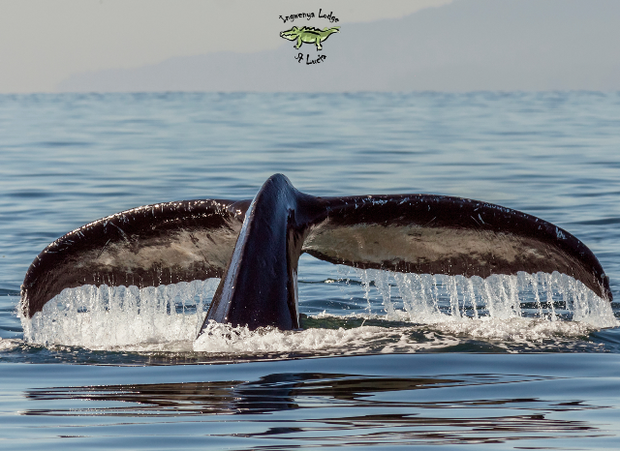
There are few travel moments as powerful as watching a whale rise from the sea. In St Lucia, KwaZulu-Natal, this isn’t a rare event — it’s part of daily life during the winter migration. The town sits on the edge of the iSimangaliso Wetland Park, a UNESCO World Heritage Site where ocean, estuary, and forest meet.
Between June and November, thousands of humpback whales move along this coastline. Visitors head out on surf-launch tours, bouncing through the breakers before reaching deeper water, where the show begins: tails crashing down, fins waving, calves surfacing beside their mothers. It’s raw, unpredictable, and a contrast to the calmer whale watching you might experience further south.
That combination of adventure and guaranteed sightings is what sets St Lucia apart — and why so many travelers add it to their South African itinerary.
When is the Best Time for Whale Watching in St Lucia?
The whale season in St Lucia starts in June and runs until November. This is when humpback whales leave the cold Southern Ocean and move up along South Africa’s east coast.
For the best viewing, plan your trip in September and October. That’s when sightings are especially rewarding, with many mothers guiding calves close to the breakers.
Head out in the mornings if you can. Seas are calmer, the launches less bumpy, and light conditions perfect for spotting a distant blow. By late November, most of the whales are on their way back south, though a few linger into early December — a small reward for travellers arriving just before the summer crowds.
Which Whales Can You See in St Lucia?
Humpback Whales – The Headliners
If you’re coming to St Lucia in winter, these are the whales you’ll see most. Humpbacks travel thousands of kilometres to reach these waters, and they don’t hide their presence. They breach, crash their tails against the surface, and sometimes lift those long white fins as if waving. In September and October, you might spot mothers moving slowly with calves, keeping close to shore.
Southern Right Whales – A Rare Bonus
Every so often, visitors are lucky enough to see a southern right whale. They don’t show up as often here as in the Cape, but when they do, they’re easy to recognise. No dorsal fin, rough patches on their heads, and a slower, heavier way of surfacing. Sightings are rare in KwaZulu-Natal, which makes them even more memorable.
Other Ocean Visitors
Not every splash comes from a humpback. St Lucia waters are also home to Bryde’s whales, a shy species that can appear at any time of year. Dolphins are frequent companions — often racing alongside the boat. Add sea turtles or even a whale shark, and you’ll see why no two trips are ever the same.
What Makes Whale Watching in St Lucia Unique?
Whale watching in St Lucia doesn’t start quietly. Instead of boarding a boat in a calm harbour, you head straight for the beach. The crew waits for the right break, the engines roar, and then the skipper drives through the surf. It’s a burst of adrenaline before you’ve even left the shore.
Out at sea, the encounters feel close and unfiltered. Licensed boats can approach within 50 metres, and sometimes the whales do the rest of the work, surfacing on their own near the bow. A tail flicks, a calf rises alongside its mother — and for a moment it feels like the ocean chose to show itself to you.
And it’s not only whales. Dolphins often ride the waves just ahead of the boat, and turtles drift past in the blue water. Those small surprises remind you that a trip here is never one-dimensional. You’re not ticking a box called “whale watching” — you’re stepping into a living, unpredictable ocean.
Whale Watching Tours & Operators in St Lucia
Advantage Tours & Charters – The Permit Holder
If you book a whale trip in St Lucia, chances are you’ll end up here. Advantage Tours & Charters is the only operator licensed to take boats close to whales. Their trips run for about two hours, starting with that famous surf launch and heading into deeper water. The crew knows these waters well — skippers and guides who have been doing this for years. If the whales don’t show, they offer a partial refund.
Heritage Tours & Safaris
Heritage doesn’t run its own whale boat but works with Advantage. What they do well is combine activities. Many travellers book a whale tour in the morning and then join a hippo and crocodile estuary cruise in the afternoon. It’s a good way to make a full day of it without having to manage the logistics yourself.
EuroZulu Safaris
EuroZulu is another long-standing St Lucia company that includes whale tours in its packages. Like Heritage, they place guests on the licensed boat, then build around it — safaris in iSimangaliso, turtle tours in summer, or day trips into the Eastern Shores. For families or small groups, that personal attention can make the experience feel more connected.
Note: All legal whale tours in St Lucia use the Advantage boat. Other companies add value through planning, transfers, or package deals, but the time at sea is the same.
Eco-Tourism and Conservation in iSimangaliso
Whale watching in St Lucia doesn’t happen by chance. It’s managed inside the iSimangaliso Wetland Park, a UNESCO World Heritage Site with strict rules that protect both whales and visitors. Only one licensed operator is allowed to approach whales at sea, and even then there are limits — no closer than 50 metres, no chasing, no crowding. Other boats must stay well back.
That system makes a difference. The whales aren’t harassed, and the people on board know they’re part of something controlled and respectful. Tourism with boundaries — and it works.
The tours also feed into research. Crews record sightings, calves, and behaviour, and those notes help scientists track the recovery of humpback populations. Decades ago these whales were almost wiped out by hunting. Today, thousands migrate past St Lucia every winter — a conservation success story you get to see with your own eyes.
There’s a community side too. Every ticket sold supports jobs for skippers, guides, and ground staff, and a portion goes back into the park through permits and conservation fees. For a small town like St Lucia, that steady flow of visitors in winter helps keep the local economy alive.
How to Plan Your Whale Watching Trip
- Book ahead: September and October are especially popular, so don’t leave it to the last minute.
- Go early in your stay: Tours depend on weather and sea conditions. If your first booking gets cancelled, you’ll still have another day or two to try again.
- Pack sensibly: A warm layer for the boat ride, sunscreen for when the sun comes up, and a camera strap you can trust. Conditions can change quickly on the water.
- Know the limits: Children under 12 and pregnant travellers usually aren’t allowed on surf-launch trips for safety reasons.
Planning with these basics in mind makes the experience smoother — leaving you free to focus on the whales instead of the logistics.
Beyond Whale Watching – More to Do in St Lucia
- Hippo and Crocodile Estuary Cruises: calmer than the ocean runs, with close-up views of hippos wallowing and crocs sunning themselves.
- Game Drives in iSimangaliso Wetland Park: a chance to swap waves for wetlands, spotting antelope, buffalo, or even leopard in the dunes.
- Turtle Nesting Tours: in summer (November to February), loggerhead and leatherback turtles come ashore to lay eggs under the moonlight.
- Birding: with over 500 recorded species, St Lucia is one of South Africa’s richest birding destinations.
It means that even if the whales draw you in, there’s more than enough here to fill a weekend or an entire holiday.
Final Thoughts on Whale Watching in St Lucia, KZN
Whale watching here isn’t a quick box to tick. It’s a morning on the Indian Ocean with real movement under the boat and a good chance of a humpback rising close by. The surf launch adds a jolt of adrenaline. The rest is quiet work – scanning the water, catching a blow, waiting for the next lift of a tail.
There’s substance behind the show. Local crews know these waters. Permits and distances are enforced. Ticket money helps keep the park running and the work going.
If you’re in St Lucia between June and November, leave room in the plan for one ocean trip. Go early in your stay, book a morning slot if possible, and let the sea decide the details. That’s often when the best moments arrive.
Further Reading
Ingwenya Lodge is a family-run self-catering lodge on the outskirts of St Lucia, nestled against the iSimangaliso Wetland Park (South Africa's first UNESCO World Heritage Site). The lodge's six units each have fully equipped kitchens and modern comforts, and the property offers panoramic views of both the St Lucia estuary and the Indian Ocean. The setting is tranquil – hippos often graze on the lawns at night – giving guests a genuine...
When you book a self-catering lodge, sharing a braai is the last thing you want. At Ingwenya Lodge, every unit has its own private braai, giving guests space to relax and cook in their own time. Families like the peace of fenced gardens, couples enjoy the privacy, and groups gather on decks with sea views.


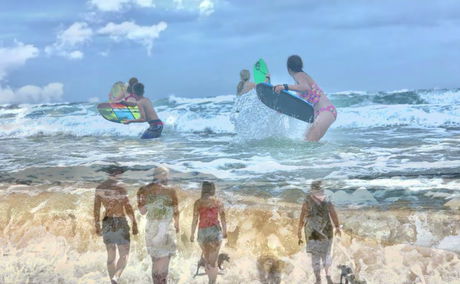
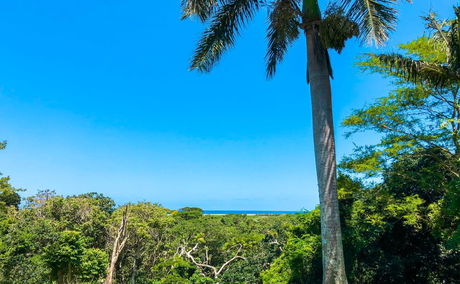
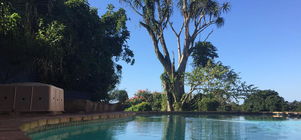

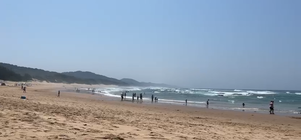
Share This Post